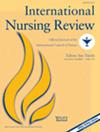Challenges and Strategies in Maintaining Continuity of Care for Chronic Disease Patients by Emergency Nurses During Disasters
Abstract
Aim
This study aimed to explore the challenges emergency nurses face in providing continuity of care for chronic disease patients during disasters in the Northern Region of Saudi Arabia and the strategies they employ to overcome these challenges.
Background
Emergency nurses play a pivotal role in disaster response, particularly in managing care for patients with chronic diseases. Resource shortages, communication breakdowns, and patient displacement frequently disrupt care continuity during disasters, exacerbating health risks for vulnerable populations.
Introduction
Ensuring consistent care for chronic disease patients during disasters is critical for mitigating negative health outcomes. Disruptions caused by disasters highlight the need for strategies that support emergency nurses in maintaining care standards under resource-limited and high-stress conditions.
Methods
A qualitative descriptive study was conducted using semistructured interviews with 14 emergency nurses from a general hospital in the Northern Region of Saudi Arabia. Thematic analysis, adhering to COREQ guidelines, was applied to identify key challenges and solutions.
Results or Findings
Three key themes were identified: resource limitations, communication barriers, and patient displacement. Nurses reported challenges such as shortages of essential medications, disruptions in communication networks, and difficulties in maintaining continuity of care for displaced patients. To mitigate these challenges, they employed strategies including improvisation, enhanced communication protocols, and resilience-building practices.
Discussion
The findings highlight the critical role of emergency nurses in disaster response and the necessity of adaptive practices. Addressing resource scarcity, fostering robust communication systems, and supporting nurse well-being are essential to maintaining care quality during disasters.
Conclusion and Implications for Nursing and/or Health Policy
Emergency nurses require robust support systems to maintain care continuity during disasters. Policymakers should integrate disaster preparedness into healthcare frameworks by enhancing resource allocation, developing resilient communication infrastructure, and providing targeted training programs. These measures can improve nurse capacity, optimize patient outcomes, and strengthen health systems' disaster response capabilities.

 求助内容:
求助内容: 应助结果提醒方式:
应助结果提醒方式:


